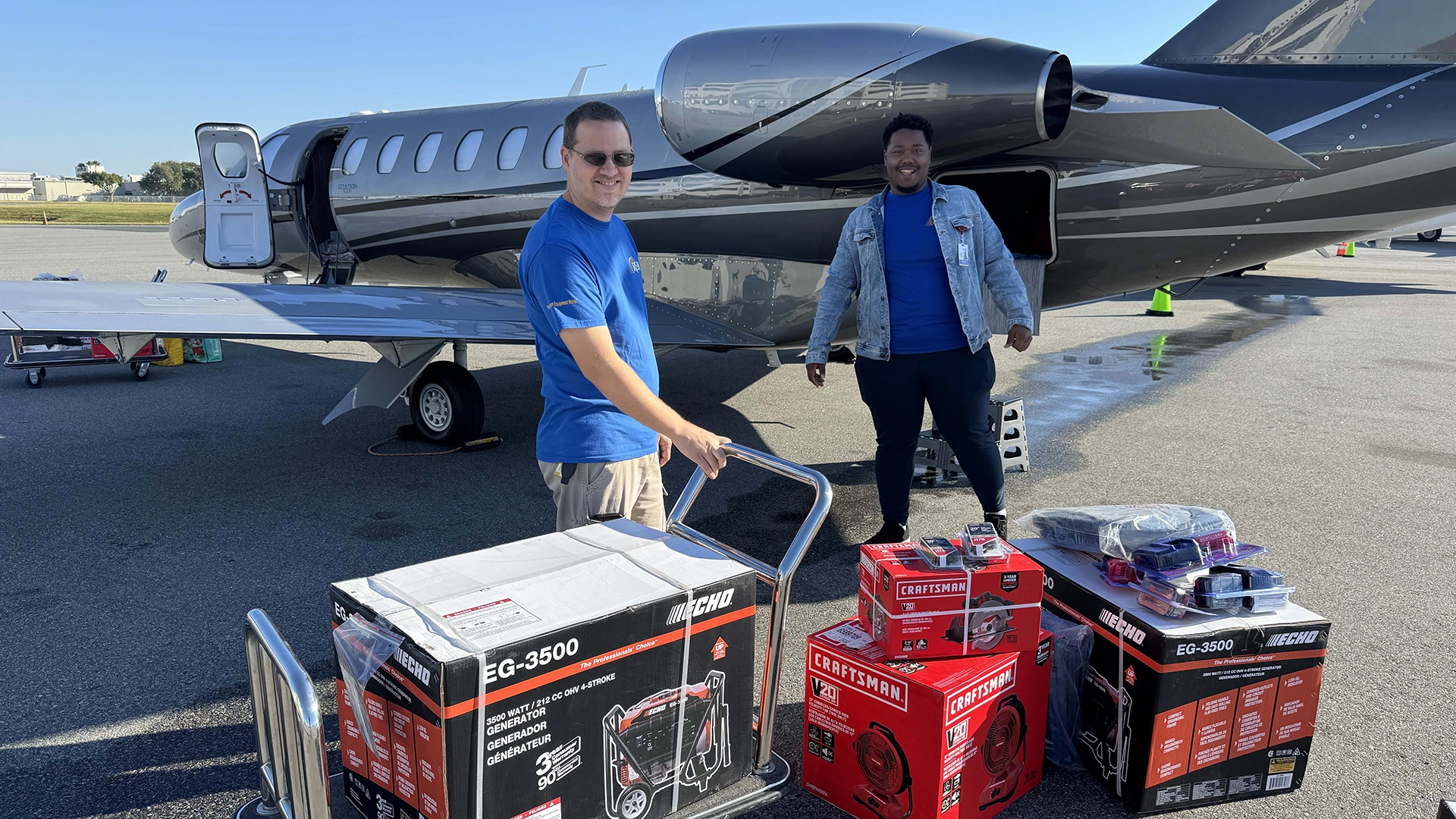CLIMBING. FAST. is an advocacy initiative to showcase business aviation’s many societal benefits, from helping America’s small businesses stay competitive in a global economy, to driving opportunities for a next-generation workforce, to leading research, development and investments for tomorrow.
Business aviation plays an essential role in creating economic opportunity, connecting communities and fostering innovation.
CLIMBING. FAST.
to new jobs and economic opportunities.
Business aviation supports 1.3 million American jobs and nearly $340 billion in economic output.
Its investments in new technologies and efficiency solutions are helping catalyze new market and job opportunities for a next generation workforce.
Business aviation helps companies in an increasingly competitive global marketplace – key employees can visit three locations in a single day, rather than a single location in three days.
Explore this PriceWaterHouseCoopers industry-wide study that determined general aviation supports 1.3 million total jobs and supplies $339.2 billion in total economic output in the United States. These numbers include direct, indirect, induced and enabled impacts.
CLIMBING. FAST.
to connect communities of all sizes.
While commercial airlines provide 500 access points across the U.S., business aviation provides access to 5,000 airports.
Business aviation is connecting communities across nearly every corner of the country, many of which lack access to commercial airlines. In Alaska, for example, where only 18% of communities are connected to the road system, air service is essential for everyday needs such as access to healthcare.
CLIMBING. FAST.
to provide even more humanitarian relief.
Business aircraft are used for around 15,000 relief flights each year, many of which are coordinated with American Red Cross workers, Department of Defense, and U.S. National Guard units.
Everyday, business aviation transports organs, takes cancer patients to treatment centers and reunites combat veterans with their families. Business aviation provides life-saving services, especially in rural and remote areas where the nearest healthcare facilities may be hundreds of miles away.
CLIMBING. FAST.
to help all businesses succeed.
According to a Harris Poll survey, 85% of companies relying on an airplane to meet their transportation challenges are small and mid-size enterprises.
In fact, most business aircraft are flown by companies employing fewer than 500 people, and the passengers aboard are typically technical specialists, mid-level managers, other company employees and their customers.
CLIMBING. FAST.
to fortify rural communities and U.S. energy independence.
Government leaders and lawmakers recognize that business aviation investment in alternative fuels will fortify rural economies and enhance our national security through energy independence.
Investment in alternative fuels and other next-generation aviation technologies will strengthen the American economy by creating countless jobs in manufacturing, feedstock production, energy generation and other sectors, opening new market opportunities for farmers, tech workers and others.
Creating Jobs Today
America’s three commercial-scale sustainable aviation fuel (SAF) facilities are capable of producing over 648 million gallons of SAF, creating more than 250 jobs and revitalizing the local economy by generating an estimated $70 million in annual economic activity.
Providing Energy Security Now
While this new market presents opportunities for Americans at the community level, it is also critical for our nation’s overall security as investments diversify America’s energy resources.
Investing in Energy Independence for Tomorrow
Texas has invested $1.6 billion in the development of a world-class SAF manufacturing and refining facility that will be the largest in North America, creating high-skill, high-paying obs and solidifying the Lone Star State as a leader in energy innovation.
Business Aviation is a Leader in Efficiency & Innovation
The business aviation industry is an incubator for innovations that propel the aviation industry forward–efficiently.
Business aviation drives innovation on fuel efficiency solutions, including the development of lighter plane parts and materials, drag-reducing wingtips, and satellite-based navigation systems, among others.
Business aviation is at the forefront of developing and certifying eco-friendly propulsion systems, including ultra-efficient turbine engines, as well as hybrid, electric and hydrogen-powered aircraft.
Business aviation is making significant investments in artificial intelligence (AI) models for flight planning that will allow aircraft operators to identify and avoid the ‘big hit’ contrails.
Innovations in jet engine fuel efficiency and other related in-flight technologies enable each new generation of aircraft to be up to 35% more efficient.
Having continually reduced its carbon footprint over the past several decades, business aviation today accounts for a mere fraction of 1% of overall transportation emissions.
See Our Industry’s Sustainability in Action
Increasingly, shrinking a company’s carbon footprint means incorporating sustainability into their aircraft utilization, and included in that strategy is an embrace of technologies that allow aircraft to be powered by something other than refined fossil fuels.
Born with aviation in his blood, Kennedy Ricci comes from a long line of aviation professionals on both sides of his family. After starting his career in marketing and social media, he was ultimately drawn to aviation partially due to the passionate people who make up the industry.



